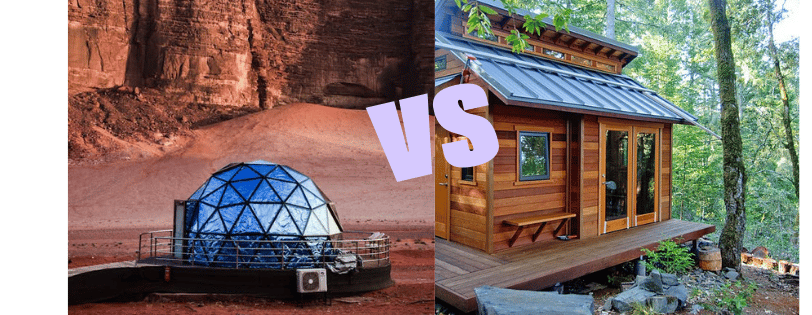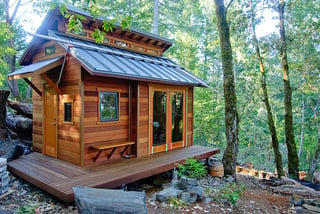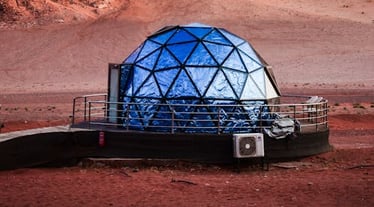Tiny House Vs. Dome House: Which is Better for Off-Grid Living?
When choosing a home for off-grid living, the options can be as diverse as the lifestyle itself. Two of the most popular choices are tiny houses and dome houses. Both are compact, sustainable, and ideal for off-grid setups, but each has unique advantages and considerations. If you're trying to decide between the two, this guide will help you weigh the pros and cons of each to find the perfect fit for your off-grid lifestyle.
HOUSING
11/20/20242 min read


What is a Tiny House?
A tiny house is a small, typically mobile, home designed to maximize living space within minimal square footage. Tiny houses are often:
Built on trailers for mobility.
Designed with multi-functional furniture to save space.
Powered by renewable energy sources like solar panels.
What is a Dome House?
A dome house is a round structure built for strength, energy efficiency, and harmony with nature. They’re often:
Made from materials like geodesic domes or earthbag construction.
Resistant to extreme weather.
Excellent for natural insulation, keeping them cool in summer and warm in winter.
Comparing Key Features
1. Affordability
Tiny House: Can be budget-friendly if you build it yourself, with costs typically ranging between $20,000 and $60,000. Prefabricated models or luxurious finishes can increase costs.
Dome House: Often more affordable for DIY builders, with earthbag dome houses costing as little as $10,000. However, geodesic domes with specialized materials may cost $50,000 or more.
Winner: Tie – Depends on your DIY skills and materials.
2. Mobility
Tiny House: Built on wheels, tiny houses are ideal for those who want to travel or relocate easily.
Dome House: Designed to be permanent, they are best suited for those who want a stationary off-grid home.
Winner: Tiny House – Perfect for nomadic lifestyles.
3. Energy Efficiency
Tiny House: Smaller space means less energy is required for heating and cooling, but the mobility may limit the use of thick, insulating walls.
Dome House: The rounded design allows for excellent air circulation and even temperature distribution, reducing energy needs significantly.
Winner: Dome House – Excels in passive heating and cooling.
4. Durability
Tiny House: Built like a traditional home, they are sturdy but can be vulnerable to extreme weather conditions depending on the build materials.
Dome House: Extremely durable, especially against high winds, heavy snow, and even earthquakes. Earthbag dome homes are particularly resilient.
Winner: Dome House – Built to withstand harsh conditions.
5. Space and Layout
Tiny House: Offers a cozy and creative use of vertical and horizontal space with lofts, hidden storage, and multi-functional furniture.
Dome House: The open, circular layout can feel more spacious, but may require custom furniture to fit the curved walls.
Winner: Tie – Tiny houses offer clever layouts, while dome houses feel more open.
6. Aesthetic Appeal
Tiny House: Can be customized to look like a traditional home or something ultra-modern.
Dome House: Offers a unique, futuristic design that blends with the natural environment.
Winner: Personal preference – Choose what matches your style!
Which One is Right for You?
Here are some questions to help you decide:
Do you plan to move frequently? If yes, a tiny house is the better option.
Do you live in an area prone to extreme weather? If yes, go for a dome house for its resilience.
What’s your budget? Both can be affordable with DIY options, but tiny houses may cost more for mobility features.
Combining the Best of Both Worlds
Can’t decide? Consider starting with a tiny house for its flexibility, then transitioning to a dome house as your permanent off-grid residence. You could even use a dome house as a greenhouse or storage unit alongside your tiny home.
Conclusion
Both tiny houses and dome houses are excellent choices for off-grid living, offering sustainability and independence. Your decision will ultimately depend on your lifestyle, budget, and location. No matter which one you choose, embracing off-grid living is a step toward a simpler, more sustainable life.





